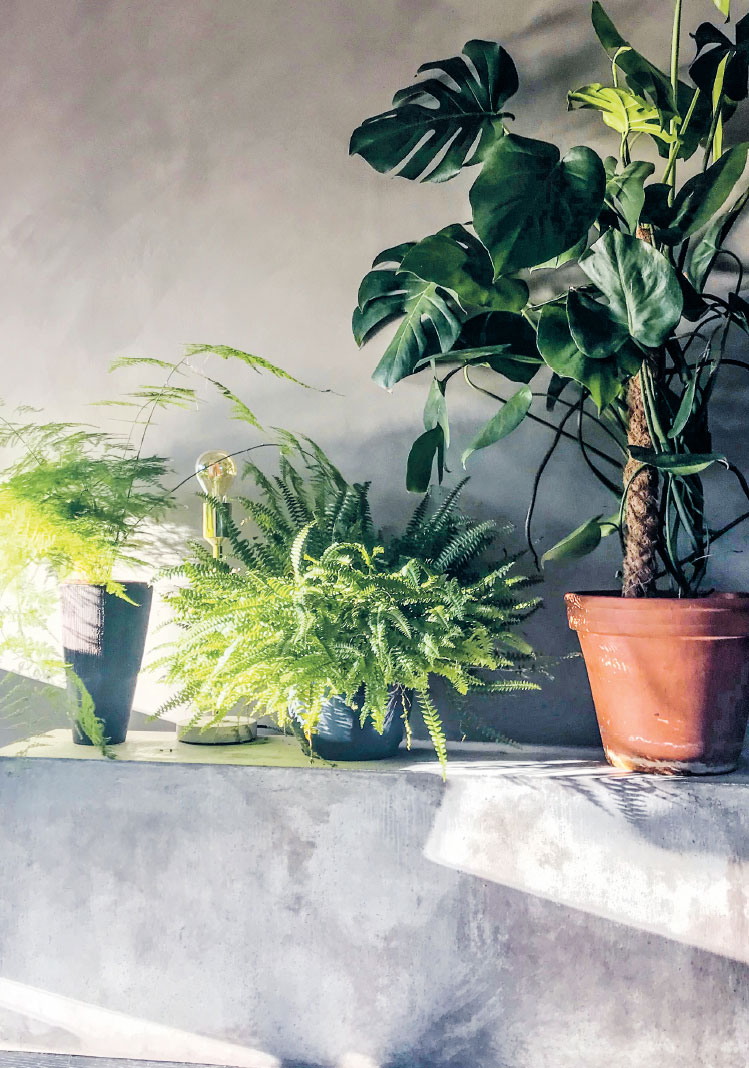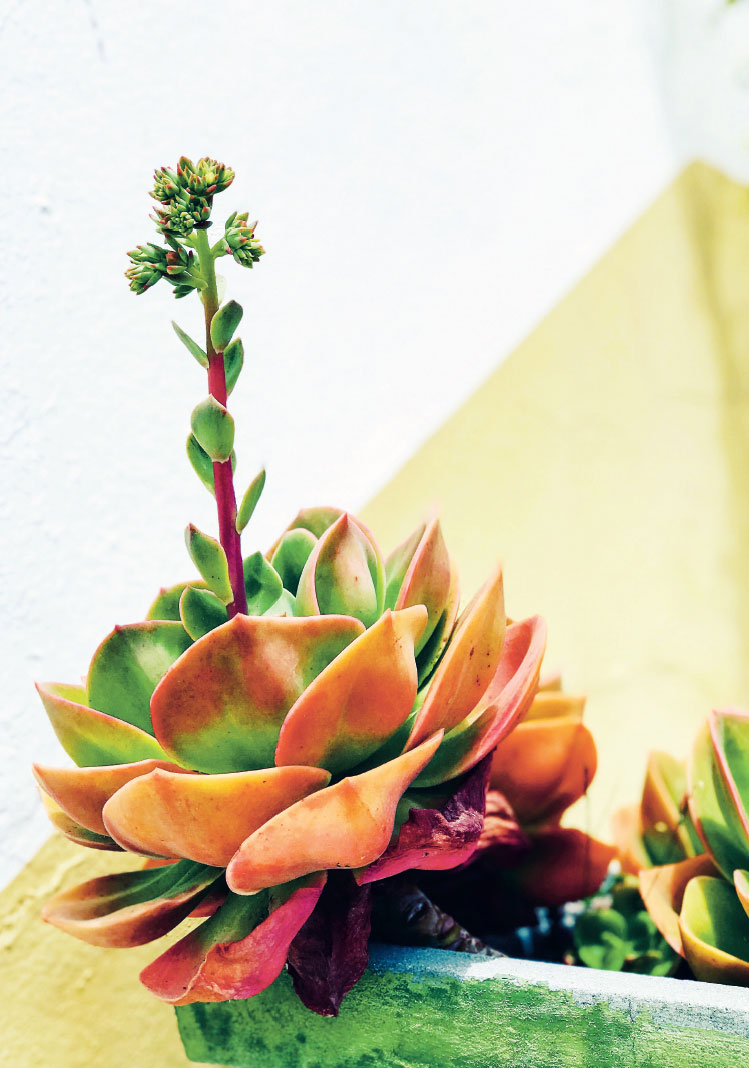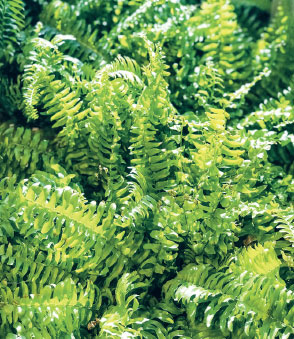
I started out by getting a whole load of plants that needed a lot of light, but in the absence of sufficient light they said their goodbyes and promptly died. It was only when I realized that I would need to get plants that could survive in my east-facing windows (i.e. with only moderate levels of sunlight) that I saw the light – quite literally.
THE RIGHT PLANT FOR THE LIGHTING CONDITIONS IN YOUR HOME
The amount of light available in your home will determine how much success you’ll have with your plants. Most plants prefer plenty of indirect light, in other words, plenty of light but usually not direct sunlight.
Use the following as a general rule of thumb:
• South-facing window
Plenty of available light
• West-facing window
Plenty-to-moderate levels of available light
• East-facing window
Moderate-to-low levels of available light
• North-facing window
Low levels of available light
HANDY HINT
You don’t actually need windows and natural light to grow plants. For instance, if you have a windowless bathroom, you can still use lighting that will ensure happy and healthy plants year-round. Ceiling full-spectrum fluorescent lighting will work fine. A full-spectrum LED light is also suitable. Tropical plants such as calathea thrive in warm bathrooms with moisture from showers and washing, as these conditions remind them of their home in the tropics.


SOUTH: plenty of sunlight
Desert plants such as cacti and succulents want sun, light and heat, and can tolerate plenty of all three. They’ll thrive year-round in south-facing windows.
Most houseplants will also do well in a south-facing window, but they’ll need some protection from the sunlight in spring and summer. During these seasons, you can move them a bit away from the window, into the room or to one side of the window, so that they’re in half-shade. You could also protect them using a sheer curtain.
WEST AND EAST: sunlight and half-shade
A window in either of these directions will provide moderate levels of light, which most plants prefer. During the colder months, plants can be left directly in the window – whereas during the warmer months, when there’s plenty of sunlight and warmth, they should be moved slightly away from the window or protected using a sheer curtain.
NORTH: shade
A north-facing window offers the least light. Plants should be left in the window year-round. Choose robust plant species with dark green leaves, and other plants adapted to lower light levels. Consider splashing out on artificial lighting for your plants during the colder months.

FACT
Plants that like lots of light need plenty of water – and plants that prefer shade need less water.
Which direction do your windows face? Here are few suggestions for what kind of plants could work in your home:
DIRECT SUNLIGHT: sun-worshippers
Plants such as aloe vera, spineless yucca (Yucca elephantipes) and cacti all love sunlight. They’ll be happy with up to 6 hours of sunlight a day, so they’d love a spot in the sunniest place in your home.
INDIRECT LIGHT: shade-lovers
Most houseplants, such as Swiss cheese plants (Monstera deliciosa) and ferns, prefer partial shade. They’re adapted to life on the forest floor, in the shade of big trees – and in your home, they would really like an environment that most closely resembles what they’re used to out in the wild. They prefer some protection from the sun, so locate them near a window, or half behind a sheer curtain, where they will receive bright but diffused light.
SHADE: the basement-dwellers
A small minority of plants need so little light that they can cope in dark corners with low-light conditions. Emerald palm (Zamioculcas zamiifolia) and mother-in-law’s tongue (Sansevieria trifasciata) do well in both poor and good light. What they can’t cope with is too much water, as this rots their roots. You should therefore allow the soil in the pot to dry out completely between watering. The less light there is, the less water and food the plant needs.
HANDY HINT
Try imagining what your plants’ natural habitats are like. Desert plants want conditions that are dry, warm and sunny. Tropical plants want moisture and warmth in partial shade, ideally with high ambient humidity.
